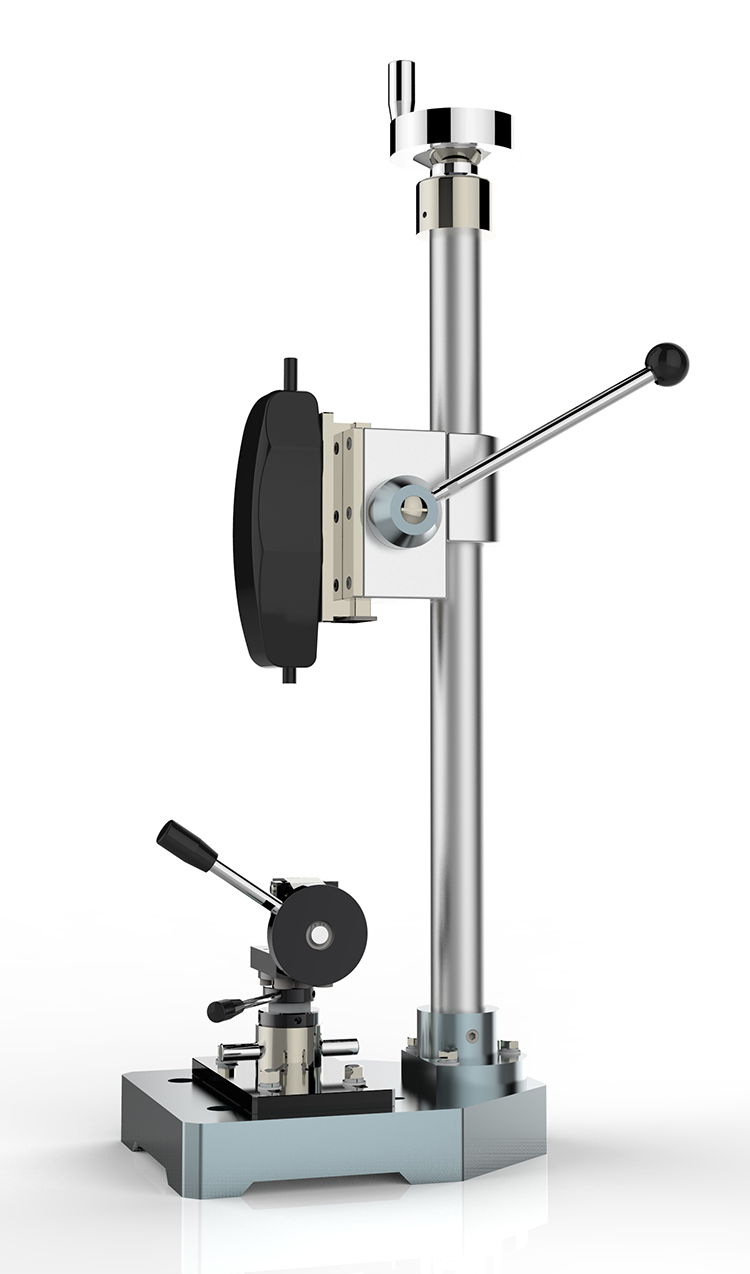-
How do you check a button pull test?
Edited by:Read:To perform a button pull test, you will need the following equipment:
1. Button pull tester: This device is specifically designed for conducting button pull tests. It typically consists of a clamp or grip to hold the button, a mechanism to apply tension, and a force gauge or load cell to measure the force required to pull the button off.
2. Test samples: These are the buttons to be tested. Ensure that you have an adequate number of buttons to obtain representative results.
Here are the steps to check a button pull test:
1. Preparation:
- Ensure that your button pull tester is properly calibrated and functioning correctly.
- Set the test parameters such as the pulling speed and acceptance criteria based on relevant standards or specifications.
- Prepare the test samples by attaching the buttons onto a fabric or material representative of the intended use.
2. Mounting the sample:
- Place the fabric or material securely in the button pull tester, ensuring that it is held firmly without slipping.
- Attach the button to the designated clamp or grip of the button pull tester. Make sure it is centered and aligned properly.
3. Test execution:
- Start the button pull tester, and gradually apply tension to the button by pulling it away from the fabric.
- The pulling speed should be controlled according to the test standard or specification being followed. Commonly used speeds are 10 mm/min or 50 mm/min.
- Continue pulling until the button either detaches, breaks, or reaches the specified endpoint as defined in the chosen test standard.
4. Measurement and analysis:
- The button pull tester should have a force gauge or load cell to measure the force exerted on the button during the test.
- Ensure that the force measurement is accurate and reliable. Record the maximum force required to pull off the button.
- Repeat the test with multiple samples to obtain representative and statistically significant results.
- Analyze the data to determine if the button meets the acceptance criteria specified in the relevant standards or specifications.
5. Interpretation of results:
- Compare the recorded maximum force with the required minimum force as specified in the applicable standard or specification.
- If the recorded force exceeds the minimum requirement, the button passes the test and is deemed acceptable.
- Conversely, if the recorded force falls below the minimum requirement, the button fails the test and is considered unacceptable.
- Document the results, including the button type, sample size, test parameters, and test outcome for future reference.

It is important to note that different industries and applications may have specific standards or specifications for button pull tests. Some common standards include:
- ISO 9211-4: This standard provides guidance on the button pull-off test method for garments.
- ASTM D4846: This ASTM standard outlines the testing procedures for buttons used in clothing.
- BS EN 13502: This British standard specifies mechanical fasteners, including buttons, and their test methods.
When performing a button pull test, ensure that you adhere to the specific requirements outlined in the applicable standard or product specification. Additionally, always follow proper safety protocols and guidelines while conducting any testing procedures.
- 2024-04-19Paper ring compression strength tester standards
- 2024-04-19Cupping tester standards
- 2024-04-19Rubber and plastic tensile tester standards
- 2024-04-19Taber 1750 wear-resistant tester standards
- 2024-04-19Stone Chip Resistance Gravelometer standards
- 2024-04-18Diaper absorption speed tester standards
- 2024-04-18Diaper leakage tester technical indicators
- 2024-04-18Paint film impact resistance tester standards
- 2024-04-18Low temperature brittleness tester principle
- 2024-04-18Battery separator permeability tester technical indicators



